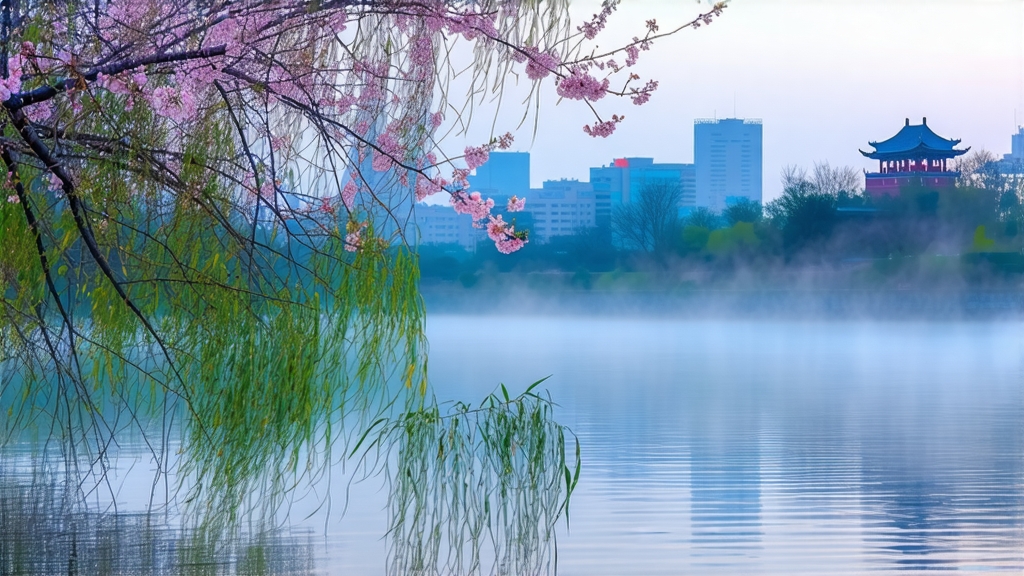
Tucked between the mist-laden hills of Dongting East Mountain and the gentle shores of Lake Tai in Jiangsu Province, Biluochun—literally “Green Snail Spring”—has captivated Chinese tea lovers since the late Ming dynasty. Legend claims a tea picker, startled by the sudden fragrance of tea mixed with blooming fruit trees, cried out “Such frightening fragrance!” (xia sha ren xiang), giving the tea its original name “Scary Fragrance.” The Kangxi Emperor, enchanted by the curled, jade-green leaves and their intoxicating aroma, rechristened it Biluochun in 1699, noting its snail-like spiral and spring harvest timing. For three centuries the tiny leaf has remained an imperial tribute, a scholar’s companion, and today one of China’s Ten Famous Teas.
Botanically, Biluochun belongs to the small-leaf Camellia sinensis var. sinensis. Within the narrow micro-climate of Dongting’s peninsula, two clonal selections dominate: the traditional “Dongting group” and the hardier “Fuding Da Bai” graft introduced in the 1970s. The former yields the most nuanced floral notes but demands painstaking handwork; the latter produces slightly plumper buds that tolerate mechanical harvesting while still retaining the trademark downy silver tips. Purists insist only leaves plicked before the Qingming festival (early April) deserve the name Biluochun; later flushes are marketed as “Spring Snail” or “Summer Spiral,” paler in fragrance and price.
The craft begins at dawn when leaf and air temperature equalize, locking in volatile aromatics. Two leaves and a bud, no longer than 2.5 cm, are snapped with the fingernail to avoid bruising. Within four hours the fragile harvest is spread in bamboo trays under peach, plum and apricot trees; petals occasionally fall onto the leaves, adding a subtle orchard perfume that connoisseurs swear they can still taste in the cup.
Withering is brief—30 to 40 minutes in shade—just enough to reduce moisture to 68 %. The critical “sha qing” (kill-green) follows: leaves are tossed onto a cast-iron pan heated to 180 °C. In 3–4 minutes the master’s bare hand flips, presses and rolls the leaf against the scorching metal, pausing only when the aroma shifts from grassy to chestnut-sweet. Temperature is then dropped to 80 °C for the “cuo tuan” (rubbing-and-curling) stage. Here the artisan forms the iconic spiral by rolling tiny handfuls along the pan’s rim, using wrist motion borrowed from calligraphy. A single kilo demands 60 000 buds and six hours of uninterrupted labor. Final low-heat drying at 60 °C for twenty minutes locks the curl and reduces moisture to 5 %, yielding a tea that looks more like miniature jade snails than vegetation.
To brew Biluochun Western-style, use 3 g of leaf in a 250 ml glass pot with 80 °C water; steep 90 seconds, then lengthen each infusion by 30 seconds. For gongfu, a 120 ml gaiwan accommodates 4 g; after a five-second rinse, flash infuse starting at ten seconds, adding five each time. The first liquor is the color of pale chardonnay; the second turns slightly more golden while maintaining clarity. Aroma ascends in three waves: initial orchid, mid-palate white peach, and a lingering honeyed finish that Chinese texts describe as “yun”—a reverberation that coats the throat minutes after swallowing.
Professional cupping judges look for “four excellences”: shape (tight spiral with visible white down), color (silvery jade), aroma (floral-fruit without grassy harshness), and taste (fresh, sweet, umami with a hint of marine minerality from Taihu’s limestone basin). A tell-tale marker of authentic early-harvest Biluochun is the “one leaf standing”: when infused buds slowly unfurl, one leaf often remains upright like a miniature green flag—a dance only the tenderest tips can perform.
Store the tea in an opaque tin, buried in a refrigerator at 2–4 °C; allow the sealed tin to warm to room temperature for four hours before opening to prevent condensation that would dull the fragrance. Under such care the spring vitality can last twelve months, though true aficionados finish their stash before the next Qingming, honoring the Chinese maxim “drink the season.”
Beyond the cup, Biluochun has inspired poets, painters and even economists.